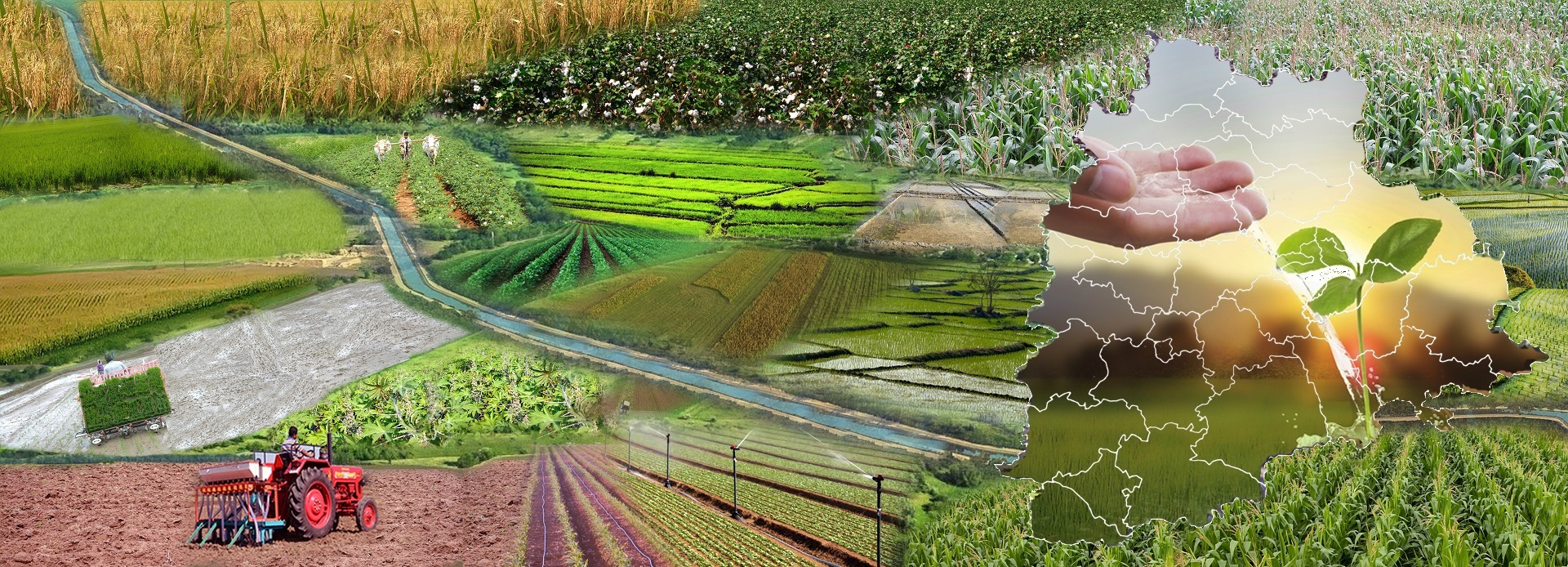



Received: 03-Dec-2021 Published: 24-Dec-2021
Soil science is the study of soil as a natural resource on the earth’s surface, including soil formation, classification, and mapping; physical, chemical, biological and fertility properties of soils; and these properties in relation to the use and management of soils.
Most of the empirical knowledge about soils in nature comes from soil studies. Soil prospecting, or soil mapping, is the process of determining soil types or other land cover properties of a landscape and mapping it for others to understand and use. It is largely based on the distinction between the individual influences of the five classical soil formers. These efforts are based on geomorphology, physical geography, and analysis of vegetation and land use patterns. Primary data for soil investigation is obtained through field surveys and supported by remote sensing.
From an academic point of view, soil scientists are attracted to one of five subject areas: microbiology, soil science, soil science, physics, or chemistry. The details of the work, however, are largely determined by the challenges our civilization faces in preserving the land that supports it, and thus the boundaries between sub-disciplines of soil science are often blurred. Soil scientists tend to keep upto- date on soil chemistry, soil physics, soil microbiology, pedology, and applied soil science in related disciplines
A more traditional job for soil scientists has been mapping of soils. Almost every area in the US now has a published soil study that includes interpretation tables of how soil properties support or limit activities and uses. An internationally recognized soil taxonomy enables uniform communication of soil properties and functions. National and international soil studies have provided the profession with unique insights into landscape-scale functions. The landscape functions that soil scientists must address in this area can be roughly divided into six areas:
A tank and drain field combination can be a fairly common type of on-site wastewater treatment plant in the world western. OSSFs account for approximately 25% of all domestic wastewater treatment in the United States. On-site wastewater systems can also support small biofilter and aerobic systems, membrane bioreactors, or batch sequence reactors. They are often considered downsized versions of municipal wastewater treatment plants and are also referred to as “package plants”.
The main mechanism for recycling biological waste in the natural environment is carried out by other organisms such as animals, insects, soil microorganisms, plants and fungi, which consume all the nutrients available in the waste, leaving completely decomposed solids that go on to form part of the topsoil. . and pure drink that has been deprived of all that can be consumed and used. This natural biological cleaning requires time and space to process the waste.
In virtually all on-site sewer systems, recycling and decomposition by natural organisms remains the most important disposal mechanism. In order to give the organisms the time they have to decompose the waste, it is achieved that minimum times of retention and sedimentation of wastewater are established, as well as minimum distances of liquid flow between sanitary landfills and surface waters or wells of water.
Structural plants that use suspension of water to move solids (private wastewater treatment plants and municipal facilities) generally create a floating layer in their primary settling tank made up of low-density liquids such as oils, floating solids, and soap suds. . This is called foam and it is slowly broken down by microorganisms and eventually falls to the bottom of the settling tank as part of the sludge. When private septic tanks are emptied of solids, the tank is generally vacuumed and thus incompletely digested sludge is added to incompletely digested sludge, further increasing its aroma and bioactivity.
Most on-site sewage treatment systems are conventional, consisting of a septic tank and an underground sewage infiltration system & # 40; SWIS & # 41;. Site restrictions and more stringent performance requirements have resulted in significant improvements in the design and management of wastewater treatment systems. For the past 20 years, the wastewater treatment system & # 40; OWTS & # 41;. The industry has developed many new treatment technologies that can achieve high levels of performance in locations with size, soil, groundwater, and landscape restrictions that can preclude the installation of traditional systems. New technologies and enhancements to existing technologies are supported to define system performance requirements, characterize wastewater flow and pollutant loads, evaluate site conditions, define performance and design limits, and select a system design that keep these factors in mind.
In Canadian federalism, the environment is a shared power between the federal and provincial governments. However, wastewater disposal falls primarily to the provinces, territories and municipalities, while the federal government has the responsibility for wastewater in the state and First Nations reserves and how it should be maintained, the type, size and location. of the system in the Rule based on the properties of the soil and other factors at the site, etc.
Most of the sewage treatment systems on site are conventional, consisting of a septic tank and an underground sewage infiltration system & # 40; SWIS & # 41; . Site restrictions and more stringent performance requirements have resulted in significant improvements in the design of wastewater treatment systems and the way they are managed. Over the past 20 years, the on-site wastewater treatment systems industry has developed many new treatment technologies that can achieve high levels of performance in locations with size, soil, groundwater, and landscape restrictions that can impede installation. of traditional systems. New technologies and enhancements to existing technologies are supported to define system performance requirements, characterize wastewater flow and pollutant loads, assess site conditions, define performance and design limits, and select a system design that keep these factors in mind. soil microorganisms, plants and fungi, which consume all the nutrients available in the waste, leaving completely decomposed solids that go on to form part of the topsoil.
None.
The author has no area of interest.